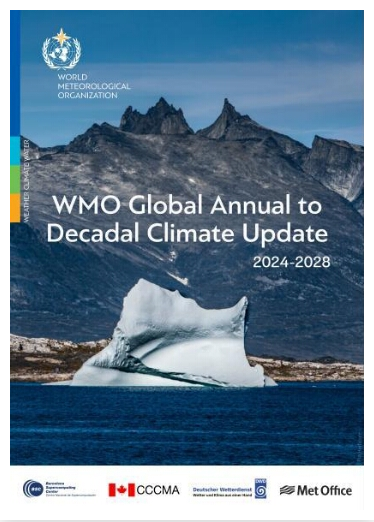Climate emergency is a health crisis ‘that is already killing us,’ says WHO
 With 2024 confirmed as the hottest year on record, the World Health Organization (WHO) has issued a stark warning: the climate crisis is also a health crisis – and it’s already claiming lives. In response, WHO/Europe on Wednesday launched a new initiative – the Pan-European Commission on Climate and Health (PECCH) – to tackle the growing threat climate change poses to public health. Chaired by former Icelandic Prime Minister Katrín Jakobsdóttir, the commission brings together 11 leading experts from across the region tasked with delivering recommendations for actionable solutions.
With 2024 confirmed as the hottest year on record, the World Health Organization (WHO) has issued a stark warning: the climate crisis is also a health crisis – and it’s already claiming lives. In response, WHO/Europe on Wednesday launched a new initiative – the Pan-European Commission on Climate and Health (PECCH) – to tackle the growing threat climate change poses to public health. Chaired by former Icelandic Prime Minister Katrín Jakobsdóttir, the commission brings together 11 leading experts from across the region tasked with delivering recommendations for actionable solutions.
Deadly heat
With nearly half of humanity already living in areas highly susceptible to climate change, a third of the world’s heat-related deaths occur in the European Region. In the years 2022 and 2023 combined, more than 100,000 people across 35 countries in the European Region died due to heat. “The climate crisis is not only an environmental emergency, it is a growing public health challenge,” said Katrín Jakobsdóttir. “We must recognise that the interplay among rising temperatures, air pollution and changing ecosystems resulting from human-induced climate change is already affecting the health and well-being of communities around the European Region and the world,” she said.
The commission is being tasked with providing recommendations to reduce emissions, invest in adaptation strategies that protect health, reduce inequality and build resilience.
Escalating threat
The climate crisis disproportionately affects the health of the most vulnerable. From the spread of infectious diseases to heat-related illness and food insecurity, “climate change poses a serious and escalating threat to human health,” said Andrew Haines, chief advisor to the WHO/Europe climate-health initiative.
World likely to breach 1.5°C limit in next five years
 According to the Global Annual to Decadal Climate Update, the planet is predicted to experience temperatures between 1.2°C and 1.9°C above pre-industrial levels (1850–1900) over the next five years. In 2024, the World Meteorological Organization (WMO) estimated that the average global temperature was between 1.34°C and 1.41°C higher than pre-industrial levels (1850-1900). The WMO now projects the 20-year average warming for 2015–2034 to reach around 1.44°C above pre-industrial levels.
According to the Global Annual to Decadal Climate Update, the planet is predicted to experience temperatures between 1.2°C and 1.9°C above pre-industrial levels (1850–1900) over the next five years. In 2024, the World Meteorological Organization (WMO) estimated that the average global temperature was between 1.34°C and 1.41°C higher than pre-industrial levels (1850-1900). The WMO now projects the 20-year average warming for 2015–2034 to reach around 1.44°C above pre-industrial levels.
A new report from the WMO warns that global temperatures will likely continue rising, with an 80 per cent chance that at least one year between now and 2029 will be even hotter.The report finds a staggering 86 per cent chance that global average temperatures will exceed 1.5°C above pre-industrial levels in at least one of the next five years, and a one per cent chance of one of those years exceeding 2°C of warming.
There is a 70 per cent chance that the five-year average itself will exceed this 1.5 degree threshold. The WMO stressed that the 1.5°C Paris Agreement target refers to long-term averages over 20 years, meaning its threshold has not been breached quite yet. However, these near-term spikes are warning signs of an accelerating climate crisis.
The forecast also highlights regional precipitation impacts, including wetter-than-average conditions expected in the African Sahel, northern Europe, and South Asia. Conversely, the Amazon region could see continued drought.
Arctic warming accelerates
The situation is even more catastrophic in the Arctic than in the rest of the world. The average Arctic temperature over the next five winters (November to March) is expected to be 2.4°C warmer than the 1991–2020 average, more than three and a half times the increase in the global average temperature.
Sea ice is expected to keep shrinking, particularly in the Barents, Bering, and Okhotsk Seas, contributing to rising sea levels and disrupted weather patterns worldwide. As the world enters this critical window, the UN agency urged climate action to prevent even more dangerous warming in the decades ahead and keep long-term warming below the 1.5°C limit.
